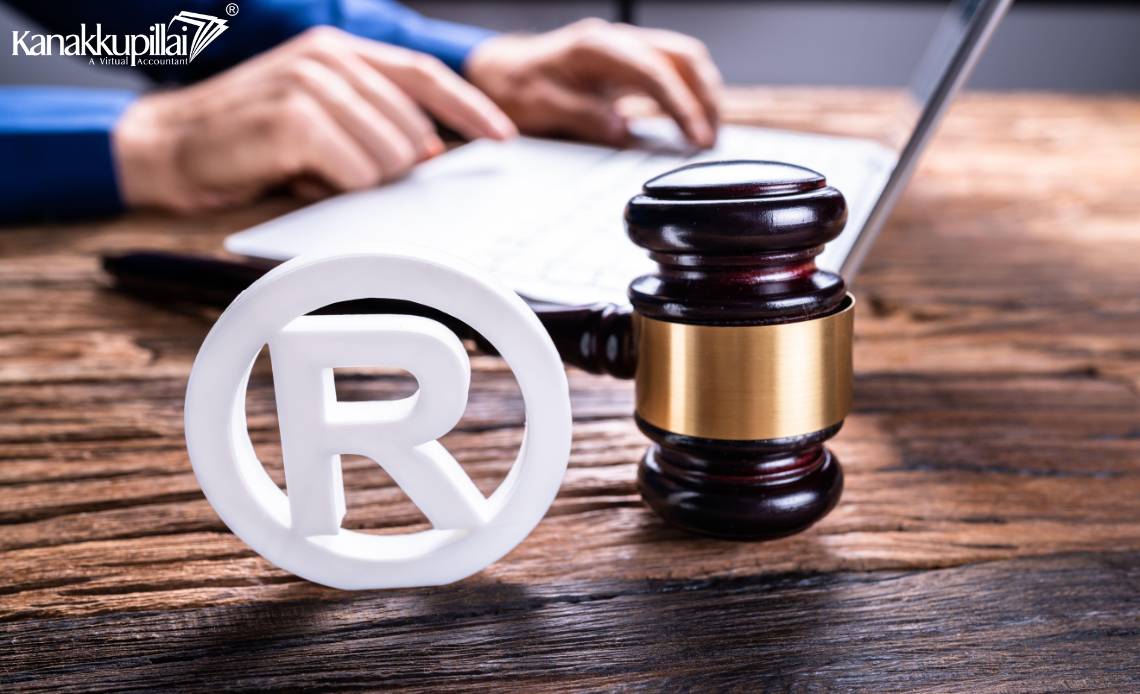A trademark is made by distinct logos, brand names, or slogans that distinguish the products and services of the owner from that of competitors, thus increasing consumer awareness and trust. However, trademark rights are territorial in nature, hence registration must be sought in each country or region that the business operates.
Certain international registration systems exist to help with international trademark registration. WIPO administers the Madrid System, through which protection for a mark can thus be sought in several countries based on a single application. Certain provisions, such as the right of priority, built into the Paris Convention for the Protection of Industrial Property, enable applicants to extend trademark protection to other member nations within six months from their date of initial registration. Lastly, there are regions like the offices of the European Union Intellectual Property Office (EUIPO) where trademark registration is done in a consolidated manner across different EU nations.
Theoretically, this may have made the existence of globally benchmarkable ideas easier. In reality, however, regional differences in national laws, practical enforcement, and constantly running risks of infringement keep companies in serious need of a strategy. That strategy requires hard work in searching, timely filing in key markets, and policing for unauthorised use. Good trademark protection out there will not only keep the good name but will also bring good competition in the global stage.
What is an International Trademark?
An international trademark signifies registration of a trademark in many countries through a common application process. However, no single “global trademark” can provide for universal coverage under law. Therefore, applications by companies for international trademark rights must be made for protection in every individual country where the trademark should be protected.
Among the various ways to apply for international trademark protection is the Madrid System which is administered by the World Intellectual Property Organisation (WIPO). This System allows all trademark owners to file one application in one language and pay one lump sum to obtain protection from more than 130 member countries. The application is based on a registration or application from the applicant’s country of origin, and, once granted, the mark enjoys the same protection as if it had been registered directly in all the appointed individual countries.
In addition to this Madrid system, a business can directly apply at national trademark offices of designated countries or belong to regional systems, such as the European Union Intellectual Property Office (EUIPO) for trademarking across all EU member states, or the African Regional Intellectual Property Organization (ARIPO) for some nations in Africa.
Even if the possibility of worldwide registration exists, enforcement of trademark rights is geographical and subject to the laws of each country having its legal framework. Owners of trademarks have to constantly watch and safeguard their rights across the markets. International trademark protection gives businesses boosted brand identity, preventing unauthorised use and giving them a competitive advantage in the global economy.
Challenges in Filing an International Trademark
Trademark registration abroad is a cumbersome but inevitable procedure for companies who desire to establish themselves overseas. Although processes such as the Madrid System ease registration processes, factors such as legal differences, exorbitant charges, trademark disputes, and enforcement challenges still exist. In order to address these challenges, companies ought to conduct thorough trademark searches, seek qualified legal counsel, and adopt a strategic plan for trademark protection. Successful international trademark management safeguards brand reputation, prevents legal issues, and promotes market visibility in the world economy.
Applying for international trademark protection is complicated but inevitable for companies who desire to build overseas. Although practices such as the Madrid System make registration processes easier, challenges such as legal differences, excessive charges, trademark disputes, and enforcement complications remain. In order to overcome such challenges, it is necessary for companies to conduct a thorough trademark search, obtain legal counsel, and formulate a strategic plan toward trademark protection. Good international trademark management safeguards brand reputation, minimises litigation risks, and enhances visibility throughout an international marketplace. A company seeking overseas expansion identifies international trademark protection as the most important import step, albeit one fraught with challenges. Such challenges arise from the divergence of legal systems and procedural pitfalls, costs, and enforcement issues. What follows is a thorough explanation of the major challenges faced by companies in filing for international trademark protection:
1. Territorial Nature of Trademarks
Trademarks are primarily territorial; protection is thus conferred according to the laws of individual countries. No world trademark exists to confer worldwide protection. The Madrid System makes it easier to apply for such protections; however, businesses must submit to the respective trademark laws of every relevant country. A mark accepted in one nation may be denied in another due to differences in the classification systems, potential conflicts with existing trademarks, or public policy considerations.
2. Serious Costs and Financial Implications
Costly- Filing for an international trademark is very costly. With Madrid, you can do a one-state application and pay additional fees for every other territory where you need protection. In addition, companies might need to consider translation costs, local legal counsel fees, and the cost of answering objections or oppositions. Alternatively, direct approaches in individual countries can prove significantly more costly because of several application fees, legal fees, and administrative charges associated with direct filing.
3. Complicated Legal and Administrative Processes
Every nation has its unique policies, checks, and registration procedures regarding trademark registration. In the cases of some nations, exhaustive paperwork is required for registration, although other nations delay the registration process for longer periods. Some countries need assurances that a mark has already been disposed of before registration can take place; others will accept a mere intention to use the mark as sufficient for registration. To navigate the differences, expertise in both legal frameworks is essential, along with considerable preparation.
4. Risk of Denial and Controversy
One of the overriding considerations in international trademark applications is the possibility of denial, particularly for conflicts with already-existing trademarks. Some countries seem to conduct a comprehensive examination for similar or conflicting marks, while others may depend on a third party to initiate challenges. If the exact or similar trademark is registered already under the target jurisdiction, the application may stand opposed, thus giving rise to further legal issues and costs. Making a complete trademark search may lessen the risk before filing, but there is still no guarantee for approval.
5. National Disparities in Classification Systems
The Nice Classification System, which is a world-recognized system for classifying goods and services, is usually the one applied; however, there are certain countries that put their own classification standards into use. This occurrence then leads to differences in trademark classification, affecting its range of protection. For instance, China applies the Nice Classification but keeps its own sub-classifications, thereby meaning a trademark granted in another country under one of the classifications may come across serious challenges in China.
6. Language Then and Translation When This Becomes Mandatory
Apart from the common English language often used in foreign trademark applications, many require translations into an official language, especially those where English is the minority language. Great care has to be exercised while making these translations as wrongful translations induce a denial of an application or a wrong view regarding the scope of protection for the trademark concerned. Several countries still desire local representation, which adds even one layer of complexity and cost to this simple confinement.
7. Enforcement and Infringement Challenges
Even with protection under the international trademark law, challenges remain in the enforcement thereof. Laws on trademark infringements, counterfeiting, and unauthorized use differ from one country to another. In many regions, especially in developing countries, counterfeiting and trademark copying bloat the scene while the enforcement measures are either very weak or slow. Trademark holders need to monitor the growth with eagle eyes to detect infringement and initiate appropriate action, which is a very time and capital-consuming activity.
8. Renewal and Maintenance Obligations
After the international registration of a trademark, businesses must fulfill renewal timelines and specific maintenance mandates for the particular jurisdiction. For some countries, renewal is subject to proof of usage, while others may require periodic declarations. Non-renewal can lead to automatic loss of trademark rights, thus making a business restart the registration process again.
9. Political and Regulatory Instability
Changes in governmental policies, trade treaties, and legal regimes can be quite determinant in foreign trademark registrations. Brexit is an example where the changes regarded different aspects of trademark protection in the United Kingdom, as well as the European Union, and were such that businesses sought “separate” trademark registrations in both areas. Besides, political upheavals within some areas may meddle with the enforcement and protection of trademarks.
10. Cultural and Linguistic Factors
A mark that works in one market may have unintended results in another. To illustrate, brand names that may sound similar to offensive or uncomplimentary words in another language may have a backlash from the public or may be rejected. It’s important for companies to do linguistic and cultural assessments to ascertain that their trademarks are fit for each target market.
Tips to Tackle These Challenges
- Prior to filing, do a full trademark search to prevent clashes with any trademarks that exist in your target markets. Consider engaging professional trademark search services or legal experts to help point out possible issues.
- By all means, make the best use of the international treaties. Use the Madrid System to file in several countries in one shot. Mark your deadlines and renewal dates to keep your trademark in play.
- Get to know the local trademark laws. Look into the trademark laws of each country, including classification and proof of use requirements. Engage a local attorney if the law stands in your way, particularly in highly regulated areas.
- Set up a budget for international filings. Reserve funds for filing fees, legal advice, translations, and possible challenges. Look at the primary markets before moving to secondary markets.
- Really think about correct wording and translation. Make sure the applications are properly translated so that misunderstandings and rejections do not occur. Consider cultural and linguistic connotations to avoid negative perceptions of the brand.
- Keep an eye out for infringements and enforce your rights. Keep up with any trademark violations or counterfeiting through online vigilance and legal action. Move swiftly against infringers to maintain the integrity of your brand.
- Keep track of regular compliances and renewals. Have renewal dates and specific maintenance requirements in each jurisdiction on your radar. Proof of use is the only way to save oneself from cancellation.
- Adapt to market and regulatory changes. Stay abreast of changes in legislation, political events, and trade agreements that may affect trademark rights. Alter your filing strategies and methods to meet the changing demands of your business needs and the legal environment.
Conclusion
Having trademarks in different countries is difficult but necessary for companies that want to expand their global activities. Across the globe, trademark protection can be denied by several factors: From differences in laws to too much money to inconsistencies in classification, weak enforcement, and regulatory gray areas. To overcome these obstacles, companies need to develop thorough planning strategies, conduct trademark searches, make good use of the Madrid System, and involve lawyers with solid expertise. Continuous monitoring, cash flow forecasting, and timely renewal of protection are critical factors in keeping trademarks secure over the long haul, despite the fact that obtaining international trademark rights requires great investment and on the ground effort, that is what will create the indispensable first step toward brand identity protection, opponent deterrence, and a strong voice in the international market.





